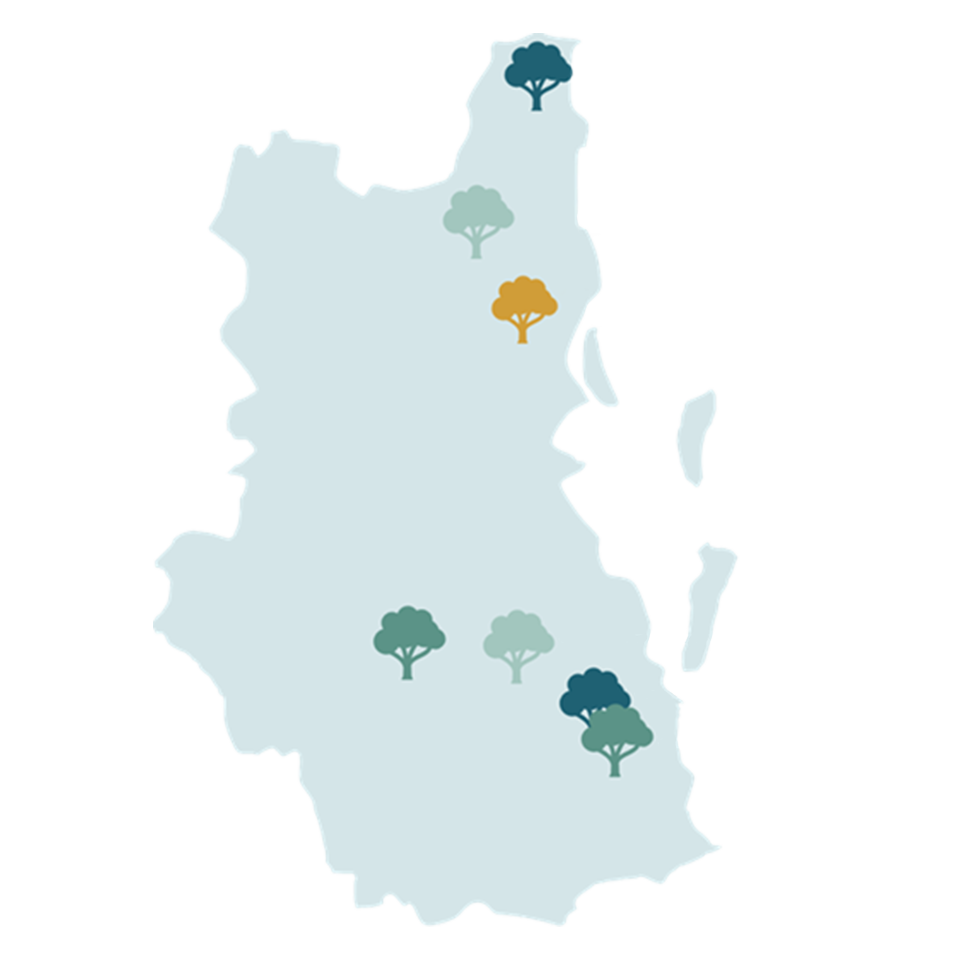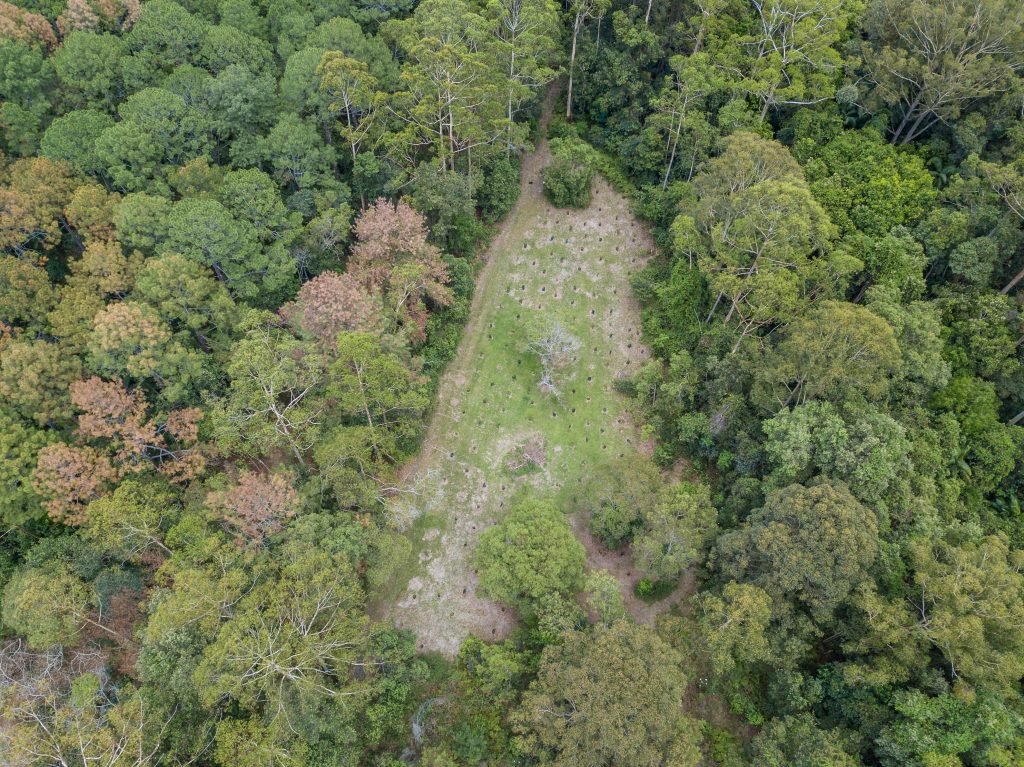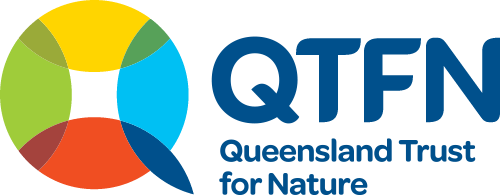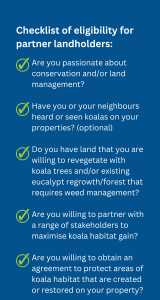Koala Habitat Restoration Partnership Program
Revegetating and regenerating koala habitat corridors in the southeast Queensland corner. KHRPP is supported by the Queensland Government.
The Koala Habitat Restoration Partnership Program (KHRPP) is making substantial strides to protect and restore habitat for one of Australia’s endangered and most iconic species – the koala.
The Koala Habitat Restoration Partnership Program is a 5-year, $4.48 million project funded by the Queensland Government to restore koala habitat in Koala Priority Areas, Koala Habitat Restoration Areas, or high koala value areas in southeast Queensland. The program addresses koala habitat loss and fragmentation, and koala population declines across South East Queensland. The Koala Habitat Restoration Partnership Program is implemented by Queensland Trust for Nature and funded by the Queensland Government.
The primary goal of the program is to establish partnerships between landholders, state and local government and other stakeholders to deliver koala habitat restoration projects in strategic locations across SEQ.
The program also aims to achieve co-benefits for the environment, landholders and community, including soil stabilisation, water quality improvement and support for local business.
Since 2019, KHRPP has established 14 landholder partnerships over two rounds, and planted more than 245,000 koala trees over 150 hectares of cleared council and privately-owned land, as well as 250 hectares of assisted natural regeneration. The program is actively restoring more than 400 hectares of new and existing koala habitat throughout SEQ.
Applications for the third round of the program are complete. We’re looking forward to supporting landholders to restore habitat.
A partnership approach is key to the successful delivery of the program. The Restoration Plan for each site has been developed by QTFN in close collaboration with the owners of each property. Tailored to the specific needs of each site and shaped to achieve the most koala habitat gain for every dollar spent, the Restoration Plans incorporate best-practice revegetation methods. Most revegetation projects are supported with four years of maintenance.
The success of the Koala Habitat Restoration Partnership Program has seen the Queensland Government increase the funding capacity of the program from their initial investment of $1.78M to $4.48 million, enabling the program to significantly increase the amount of koala habitat restoration delivered across South East Queensland.
The program funding includes investment by the Land Restoration Fund to investigate ways that carbon offsetting can be incorporated into koala habitat projects. This will supplement delivery costs and increase the amount of habitat restoration return for the koala conservation funding invested.
Over 100 Expressions of Interest were received for the third round of the Koala Habitat Restoration Partnership Program in October 2023 which are currently under assessment. We will be in touch with the applicants to let them know the status of their application.

Above: Phase 1 initiated in 2019 includes seven project sites across council and private land tenure, including Dangerbridge, Black Mountain, Mount Mellum (Pictured Below), Hidden Vale, Ivory’s Rock, Woodstock and Kilmore Reserve.
Why should landholders get involved?
The program provides a unique opportunity for landholders to tackle the key threats of habitat loss and fragmentation on their own properties and to make a valuable contribution towards reversing koala declines in SEQ.
Landholders will have the added support of the Queensland Government’s Department of Environment, Science and Innovation (DESI), Queensland Trust for Nature, and other stakeholders who will contribute a range of skills and resources over the four-year project period.
If you have any queries about the Koala Habitat Restoration Partnership Program, please contact us at khrpp@qtfn.org.a
Unfortunately, currently applications for new KHRPP landholders are closed.
The assessment process
QTFN follows this 4-step process for project site selection:
1. Expression of interest:
Each applicant is invited to submit up to five sites for consideration using a single form for each site. The EOI form will automatically be populated into a database of all potential project sites. The information provided in the form will be used to inform the initial desktop assessment for your project, and if your application is successful, this information will be used to guide field assessments and to strategically allocate restoration funds in a way that maximises gains in koala habitat.
Applications for expressions of interest are currently closed, we hope to open again in 2024.
Due to number of applications and the time taken to undertake desktop assessments, we will endeavour to be in contact with landholders within two months from the closing date to advise the status of their application.
Note: Previous applicants are welcome to resubmit. Please contact us at khrpp@qtfn.org.au if you have any queries about resubmitting applications.
2. Desktop analysis (QTFN input only)
The desktop assessment will assess project sites according to their size, their potential to connect existing habitat patches, and position within strategic areas and corridors.
3. On ground site assessment (QTFN input only)
On ground assessments will further assess potential projects according to their habitat quality and koala activity. Note: the landholder may be required to provide QTFN ecologists a tour of their property prior to or during on-ground assessments.
4. Project comparison and selection (QTFN input only)
The cost-benefit analysis will compare potential projects according to their koala habitat gain and delivery cost feasibility and allocate funds to successful projects based on the estimated gain in koala habitat quality and koala population per project dollar spent.
Monitoring and acquittal:
QTFN will undertake ongoing monitoring and reporting throughout the four-year project period to ensure that desired habitat restoration outcomes are being achieved.
There is no requirement for successful landholders to undertake monitoring or prepare an acquittal upon completion of their restoration project.
Action & Insight
Presenting koala habitat restoration work at Logan Koala Forum
In February 2024, Maree Clancy, QTFN Restoration Project Officer, presented at the Logan Koala Forum about existing and upcoming koala habitat restoration work being done in the South East Queensland region. The Koala Habitat Restoration Partnership Program (KHRPP) establishes partnerships between landholders, government, industry, and other stakeholders to deliver koala habitat restoration projects in strategic […]
Watergum Community Koala Education Workshop
On 18 November 2023, the Watergum community came together for a koala education workshop at Koala Crossing, one of QTFN’s Revolving Fund properties. The workshop focused on helping koala enthusiasts learn more about how to establish and conserve koala habitats, understand the challenges koalas face, and engage in koala survey activities. Dave Madden, QTFN’s Restoration Project […]
Celebrating Partnerships – Koala Habitat Restoration
Recently, Queensland Trust for Nature helped facilitate maintenance and infill planting to help restore the riparian border at one of our first round properties for the Koala Habitat Restoration Partnership Program (KHRPP), Woodstock. Woodstock was one of many landholders impacted by floods earlier this year. When the Albert River rose and the property suffered significant […]
Our Impact
A partnership approach is key to the successful delivery of the program. The Restoration Plan for each site has been developed by QTFN in close collaboration with the owners of each property. Tailored to the specific needs of each site and shaped to achieve the most koala habitat gain for every dollar spent, the Restoration Plans incorporate best-practice revegetation methods. Most revegetation projects are supported with four years of maintenance.
The success of the Koala Habitat Restoration Partnership Program has seen the Queensland Government increase the funding capacity of the program from their initial investment of $1.78M to $4.48 million, enabling the program to significantly increase the amount of koala habitat restoration delivered across South East Queensland.
The program funding includes investment by the Land Restoration Fund to investigate ways that carbon offsetting can be incorporated into koala habitat projects. This will supplement delivery costs and increase the amount of habitat restoration return for the koala conservation funding invested.
Over 100 Expressions of Interest were received for the third round of the Koala Habitat Restoration Partnership Program in October 2023 which are currently under assessment. We will be in touch with the applicants to let them know the status of their application.

Above: Phase 1 initiated in 2019 includes seven project sites across council and private land tenure, including Dangerbridge, Black Mountain, Mount Mellum (Pictured Below), Hidden Vale, Ivory’s Rock, Woodstock and Kilmore Reserve.

How it Works?
Why should landholders get involved?
The program provides a unique opportunity for landholders to tackle the key threats of habitat loss and fragmentation on their own properties and to make a valuable contribution towards reversing koala declines in SEQ.
Landholders will have the added support of the Queensland Government’s Department of Environment, Science and Innovation (DESI), Queensland Trust for Nature, and other stakeholders who will contribute a range of skills and resources over the four-year project period.
If you have any queries about the Koala Habitat Restoration Partnership Program, please contact us at khrpp@qtfn.org.a
Unfortunately, currently applications for new KHRPP landholders are closed.
The assessment process
QTFN follows this 4-step process for project site selection:
1. Expression of interest:
Each applicant is invited to submit up to five sites for consideration using a single form for each site. The EOI form will automatically be populated into a database of all potential project sites. The information provided in the form will be used to inform the initial desktop assessment for your project, and if your application is successful, this information will be used to guide field assessments and to strategically allocate restoration funds in a way that maximises gains in koala habitat.
Applications for expressions of interest are currently closed, we hope to open again in 2024.
Due to number of applications and the time taken to undertake desktop assessments, we will endeavour to be in contact with landholders within two months from the closing date to advise the status of their application.
Note: Previous applicants are welcome to resubmit. Please contact us at khrpp@qtfn.org.au if you have any queries about resubmitting applications.
2. Desktop analysis (QTFN input only)
The desktop assessment will assess project sites according to their size, their potential to connect existing habitat patches, and position within strategic areas and corridors.
3. On ground site assessment (QTFN input only)
On ground assessments will further assess potential projects according to their habitat quality and koala activity. Note: the landholder may be required to provide QTFN ecologists a tour of their property prior to or during on-ground assessments.
4. Project comparison and selection (QTFN input only)
The cost-benefit analysis will compare potential projects according to their koala habitat gain and delivery cost feasibility and allocate funds to successful projects based on the estimated gain in koala habitat quality and koala population per project dollar spent.
Monitoring and acquittal:
QTFN will undertake ongoing monitoring and reporting throughout the four-year project period to ensure that desired habitat restoration outcomes are being achieved.
There is no requirement for successful landholders to undertake monitoring or prepare an acquittal upon completion of their restoration project.
Action & Insight
Action & Insight
Presenting koala habitat restoration work at Logan Koala Forum
In February 2024, Maree Clancy, QTFN Restoration Project Officer, presented at the Logan Koala Forum about existing and upcoming koala habitat restoration work being done in the South East Queensland region. The Koala Habitat Restoration Partnership Program (KHRPP) establishes partnerships between landholders, government, industry, and other stakeholders to deliver koala habitat restoration projects in strategic […]
Watergum Community Koala Education Workshop
On 18 November 2023, the Watergum community came together for a koala education workshop at Koala Crossing, one of QTFN’s Revolving Fund properties. The workshop focused on helping koala enthusiasts learn more about how to establish and conserve koala habitats, understand the challenges koalas face, and engage in koala survey activities. Dave Madden, QTFN’s Restoration Project […]
Celebrating Partnerships – Koala Habitat Restoration
Recently, Queensland Trust for Nature helped facilitate maintenance and infill planting to help restore the riparian border at one of our first round properties for the Koala Habitat Restoration Partnership Program (KHRPP), Woodstock. Woodstock was one of many landholders impacted by floods earlier this year. When the Albert River rose and the property suffered significant […]


